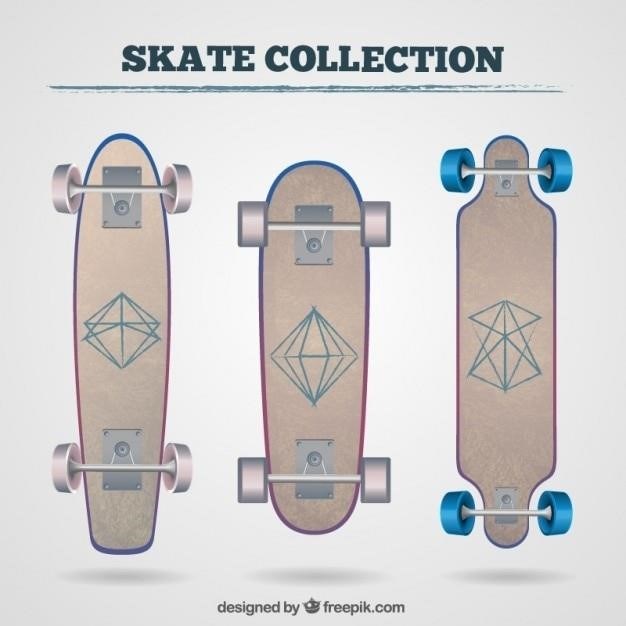classic mining guide
Welcome to the ultimate guide for Mining in Classic WoW! This comprehensive resource will take you from a novice to a skilled miner‚ ready to extract valuable resources from the lands of Azeroth. Discover the secrets to leveling up efficiently!
Mining is a primary profession in Classic World of Warcraft (WoW) that allows players to gather ores from mineral veins and deposits found throughout the game world. These ores can then be smelted into metal bars‚ which are essential materials for various crafting professions such as Blacksmithing‚ Engineering‚ and Jewelcrafting. Beyond its role in crafting‚ Mining is also crucial for completing certain quests‚ including some new Season of Discovery quests‚ requiring specific amounts of gathered and processed materials. As a gathering profession‚ Mining synergizes well with crafting professions‚ providing a direct supply of raw materials. It allows players to be self-sufficient or to generate income by selling ores and bars on the Auction House. Unlike some professions‚ Mining doesn’t require recipes or patterns to learn; instead‚ the ability to mine specific veins is automatically gained as you increase your Mining skill. Techniques in Mining are listed under Mining skills. In general‚ the ability to mine mining nodes is automatically gained when new proficiencies are learnt . Techniques are passively applied bonuses that provide more or different resources when looting the specific node. When available‚ each node has three ranks of proficiency. This guide will cover all aspects of Mining in Classic WoW‚ from leveling the profession efficiently to finding the best locations for specific ores‚ providing tips and tricks for maximizing your mining yield‚ and exploring the synergies between Mining and other professions. Whether you’re a seasoned player or new to Classic WoW‚ this guide will equip you with the knowledge and strategies to master the art of Mining and reap its many rewards.
Leveling Mining from 1-75 (Apprentice)
Leveling Mining from 1 to 75 in Classic WoW is the first step towards becoming a master miner. This initial phase focuses on mining Copper and Tin Veins‚ primarily found in starter zones. Every starter zone is filled with Copper Ore‚ it doesnt really matter which one you choose. Night Elf players have to wait until they get to Darkshore before they can start leveling mining because Teldrassil doesnt have any Copper Ore. Dont forget to buy a Mining Pick from the Mining Supply vendor near your trainer! You dont have to equip it‚ but you have to have it in your inventory. To begin‚ visit a Mining trainer in a major city or starting zone to learn the Apprentice Mining skill. For Alliance players‚ Gelman Stonehand in Stormwind City is an excellent choice‚ especially for those based in Elwynn Forest. The leveling process can be broken down into two main stages: 1-65: Focus on mining Copper Veins; These veins are abundant in starter zones like Elwynn Forest (for humans)‚ Durotar (for orcs and trolls)‚ and Dun Morogh (for dwarves and gnomes). Continuously mine Copper Veins until you reach a Mining skill of 65. 65-75: Transition to mining Tin Veins and Silver Veins. These veins start appearing in slightly higher-level zones such as Westfall‚ The Barrens‚ and Loch Modan. While mining Tin‚ keep an eye out for Silver Veins‚ as these will also help you reach skill level 75. A helpful tip is to smelt the Copper Ore into Copper Bars as you mine. This not only increases your Mining skill but also provides you with valuable materials for other professions or for sale. It’s important to remember that the higher your Mining skill‚ the less experience you’ll gain from mining lower-level veins. Therefore‚ transitioning to Tin and Silver Veins around skill level 65 is crucial for efficient leveling. You can also purchase 50x Copper Ore‚ smelt it and increase your mining level without even having seen a mineral vein. This can drastically reduce the actual time spent mining to level. So‚ here is a list that shows what level of mining is actually required to mine a particular vein or deposit.
Mining Trainers for Alliance
For Alliance players seeking to hone their Mining skills in Classic WoW‚ several trainers are strategically located across Azeroth to facilitate your training. These trainers offer various levels of expertise‚ from Apprentice to Master‚ allowing you to continually improve your mining proficiency as you level up. Here’s a breakdown of key Mining trainers for the Alliance: Gelman Stonehand: Located in Stormwind City‚ Gelman Stonehand serves as the primary Mining trainer for the city. He is situated in the Trade District‚ making him easily accessible for players based in Elwynn Forest and the surrounding areas. Gelman offers both Apprentice and Journeyman training‚ allowing you to reach a Mining skill of 150. He’s the perfect trainer to visit if you’re starting your mining journey in Elwynn Forest or are frequently in Stormwind. Yarr Hammerstone: Found in Ironforge‚ Yarr Hammerstone is the go-to Mining trainer for dwarves and gnomes. He is located within the Forgeworks‚ the main crafting area of Ironforge. Yarr provides training up to the Artisan level (skill of 225)‚ making him essential for advancing beyond the initial stages of mining. If you’re a dwarf or gnome‚ or simply prefer the Ironforge area‚ Yarr is your primary trainer. Furen Longbeard: Situated in Thelsamar‚ Loch Modan‚ Furen Longbeard offers training for lower-level miners venturing into the Loch Modan region. He provides training up to the Journeyman level (skill of 150)‚ making him a convenient option for those leveling in the area or seeking a trainer outside of the major cities. Jedidiah Handers: Located in Darnassus‚ Jedidiah Handers is the Mining trainer for night elves. However‚ due to the lack of early-level mining nodes in Teldrassil‚ night elf players typically begin their mining training after reaching Darkshore. Jedidiah offers training up to the Journeyman level (skill of 150). These trainers will guide you through the ranks‚ teaching you how to smelt ore into bars and even giving you quests to improve your skills. Remember to visit your trainer regularly as you level to learn new skill tiers and increase your maximum Mining skill. Don’t forget your Mining Pick!

Best Zones for Mining Specific Ores
To maximize your mining efficiency in Classic WoW‚ it’s crucial to know the prime locations for specific ores. Different zones offer varying concentrations of mineral veins‚ making some areas more suitable for gathering particular resources than others. Here’s a breakdown of the best zones for mining specific ores: Copper Ore: Starter zones are abundant with Copper Veins. Elwynn Forest (Alliance) and Durotar (Horde) are excellent starting points; Darkshore is a good option for Night Elves. These zones provide ample opportunities to level your Mining skill from 1 to 65. Tin and Silver Ore: As you progress beyond Copper‚ you’ll need Tin and Silver. Hillsbrad Foothills is a great zone for both‚ offering a mix of Tin Veins and Silver Veins. Silverpine Forest (Horde) also contains a decent amount of Tin. Stonefield Mine in Elwynn Forest is also a good spot for Tin. Iron Ore: For Iron Ore‚ head to the Arathi Highlands. This zone is rich in Iron Deposits‚ making it ideal for leveling your Mining skill from 125 to 175. The Wetlands is another viable option‚ though it may be more contested. Desolace offers a decent amount of Iron as well. Gold Ore: Gold Ore becomes important as you approach higher mining levels. The best zones for Gold are Stranglethorn Vale and the Hinterlands. These zones have a higher concentration of Gold Veins compared to lower-level areas. Mithril and Truesilver Ore: These valuable ores are found in higher-level zones. The Burning Steppes and Searing Gorge are known for their Mithril Deposits. Winterspring also offers a good supply of Mithril‚ along with Truesilver. Un’Goro Crater is another excellent zone for both Mithril and Truesilver. Thorium Ore: Thorium is the end-game ore in Classic WoW. The best zones for Thorium are Eastern Plaguelands‚ Western Plaguelands‚ and Silithus. These zones contain Rich Thorium Veins‚ which offer the highest yield of Thorium Ore; Remember to always be aware of your surroundings and potential competition from other miners. Using a Mining tracking ability and a map addon can help you locate veins more efficiently. Good luck‚ and happy mining!

Tips and Tricks for Efficient Mining
Efficient mining in Classic WoW requires more than just swinging your pickaxe at every ore vein you see. It’s about optimizing your route‚ utilizing helpful tools‚ and understanding the respawn rates of different nodes. Here are some essential tips and tricks to help you become a more productive miner: Map Addons: Install a map addon that tracks the locations of ore veins. These addons significantly reduce the time spent searching for nodes‚ allowing you to plan efficient routes and maximize your gathering potential. Gatherer and Cartographer are popular choices. Route Planning: Before heading out‚ plan your mining route. Identify zones with a high concentration of the ores you need and create a path that minimizes travel time. Consider factors like terrain‚ mob density‚ and potential competition from other players. Respawn Timers: Understanding the respawn timers of different ore veins is crucial. Copper and Tin veins typically respawn faster than Mithril and Thorium. Pay attention to the timers in your chosen zones and adjust your route accordingly. Circle around areas where you’ve recently mined to catch respawning nodes. Mining Pick: Always carry a Mining Pick with you. While you don’t need to equip it‚ having it in your inventory is essential to be able to mine. Stock up on multiple picks‚ especially when venturing into high-level zones‚ as they can break. Tracking: Utilize the “Find Minerals” tracking ability. This ability allows you to see nearby mineral veins on your minimap‚ making it easier to locate nodes. Remember to activate tracking whenever you’re in a mining zone. Avoid Overcrowded Areas: If a zone is heavily populated with miners‚ consider moving to a less contested area. While competition is inevitable‚ mining in less crowded zones can often be more efficient due to reduced competition for nodes. Smelting: Smelt ores into bars as you mine‚ especially if you’re carrying a lot of ore. This reduces the amount of inventory space you take up. Smelting also increases your skill level‚ which is necessary for mining higher-level ores. Gear and Enchants: While not essential‚ certain gear and enchants can improve your mining efficiency. The Goblin Mining Helmet (Engineering) provides +5 Mining skill. Enchanting your gloves with Mining or Advanced Mining can also boost your skill. Leveling: Remember that you can smelt ores to level up your mining skill‚ even if you haven’t actually mined them from a vein. This can be a useful way to catch up if you’re behind or to level up in a safe location. By implementing these tips and tricks‚ you’ll be well on your way to becoming a master miner in Classic WoW‚ gathering valuable resources and contributing to your realm’s economy.

Enchanting and Gear for Mining
While Mining is primarily a gathering profession‚ certain gear and enchantments can significantly boost your efficiency and overall mining experience in Classic WoW. These enhancements primarily focus on increasing your Mining skill‚ allowing you to mine higher-level nodes sooner and reducing the chance of failed attempts. Here’s a breakdown of helpful gear and enchantments: Glove Enchants: The most accessible and effective way to increase your Mining skill is through glove enchants. Enchant Gloves ‒ Mining provides a +2 Mining skill bonus. A more advanced option‚ Enchant Gloves — Advanced Mining‚ grants a +5 Mining skill bonus. These enchants are relatively inexpensive and can be applied by any Enchanter with the appropriate skill level. Goblin Mining Helmet: Crafted by Engineers‚ the Goblin Mining Helmet offers a permanent +5 Mining skill bonus. This helmet is a great option for miners looking for a reliable skill boost. However‚ obtaining one requires either leveling Engineering yourself or purchasing it from the Auction House. Other Skill-Boosting Gear: While dedicated Mining gear is limited in Classic WoW‚ some items with general skill bonuses can indirectly aid your mining efforts. Items that increase your overall skill can help you reach the required Mining level to mine certain nodes faster. Mining-Specific Gear (Limited): There isn’t much gear specifically designed for mining in Classic WoW. The focus is primarily on the enchantments and the Engineering-crafted helmet. However‚ keep an eye out for any items that might offer even a small bonus to your overall skill‚ as every little bit helps. Why Skill Matters: Having a higher Mining skill allows you to mine higher-level nodes without failing. Failed attempts not only waste time but also attract unwanted attention from nearby creatures. A higher skill also increases the speed at which you mine‚ allowing you to gather resources more quickly. Leveling with Skill Bonuses: Using gear and enchants can help you level your Mining skill more quickly‚ allowing you to progress to more lucrative ores and zones sooner. The extra skill points provided by enchants and gear can bridge the gap between required skill levels and your current skill‚ enabling you to mine nodes that would otherwise be too difficult. Cost vs. Benefit: When deciding whether to invest in gear and enchants‚ consider the cost versus the benefit. While the Goblin Mining Helmet is a significant investment‚ the +5 Mining skill it provides is a permanent upgrade. Glove enchants are relatively inexpensive and offer a good return on investment. In conclusion‚ while not strictly necessary‚ enchanting your gloves and acquiring a Goblin Mining Helmet can significantly improve your mining efficiency and overall experience in Classic WoW. These enhancements allow you to level faster‚ mine higher-level nodes‚ and ultimately gather more resources.
Mining and Related Professions

Mining in Classic WoW is intrinsically linked to other professions‚ creating a symbiotic relationship that can be highly profitable and beneficial for your character’s progression. Understanding these connections is crucial for maximizing the value of your Mining skill. The primary professions that synergize with Mining are Blacksmithing‚ Engineering‚ and Jewelcrafting (though Jewelcrafting was not available in the original Classic WoW‚ it is present in some versions). Blacksmithing: Blacksmithing is perhaps the most direct beneficiary of Mining. Blacksmiths use the ores and bars obtained through Mining to craft weapons‚ armor‚ and various other items. This profession requires a steady supply of metal‚ making Mining an ideal companion skill. By leveling both Mining and Blacksmithing‚ you can become self-sufficient‚ gathering your own materials and crafting powerful gear for yourself or to sell on the Auction House. Engineering: Engineering‚ like Blacksmithing‚ relies heavily on metal bars. Engineers use these materials to create gadgets‚ devices‚ and explosives. Many of these creations are incredibly useful in both PvE and PvP‚ making Engineering a popular choice for many players. Again‚ Mining provides the raw materials needed for Engineering‚ allowing you to craft a wide range of items without relying on external suppliers. Jewelcrafting: (Available in some versions of Classic WoW) Jewelcrafting utilizes ores and gems obtained through Mining. Jewelcrafters cut and refine these materials to create rings‚ necklaces‚ and other jewelry‚ as well as gems that can be socketed into gear to provide stat bonuses. Mining provides the base materials for Jewelcrafting‚ making it a natural complement to this profession; Secondary Professions: While not as directly linked as the crafting professions‚ Mining can also indirectly benefit other professions. For example‚ First Aid requires cloth‚ which can be purchased with gold earned from selling excess ores and bars. Similarly‚ Cooking can be supported by selling materials on the Auction House to generate income for purchasing ingredients. Gold Generation: Even if you don’t choose to level a crafting profession alongside Mining‚ it can still be a lucrative source of income. Ores and bars are always in demand‚ as other players need them for their own crafting endeavors. By selling your gathered materials on the Auction House‚ you can generate a steady stream of gold‚ which can be used to purchase gear‚ skills‚ and other necessities. Optimal Profession Combinations: The most popular and effective profession combinations involving Mining are Mining/Blacksmithing and Mining/Engineering. These combinations allow you to gather your own materials and craft powerful items‚ making you self-sufficient and potentially very wealthy. Mining/Jewelcrafting (where available) is another strong combination. Considerations: When choosing your professions‚ consider your playstyle and goals. If you enjoy crafting and want to be self-sufficient‚ Mining/Blacksmithing or Mining/Engineering are excellent choices. If you prefer to focus on gathering and selling materials‚ Mining alone can be a viable option. In conclusion‚ Mining is a versatile profession that can be combined with various other professions to create a powerful and self-sufficient character. Whether you choose to become a master craftsman or simply focus on gathering and selling resources‚ Mining can be a valuable asset in Classic WoW.














